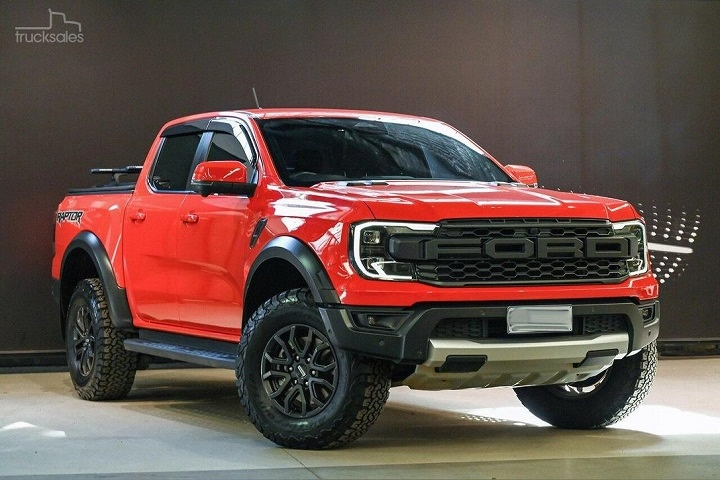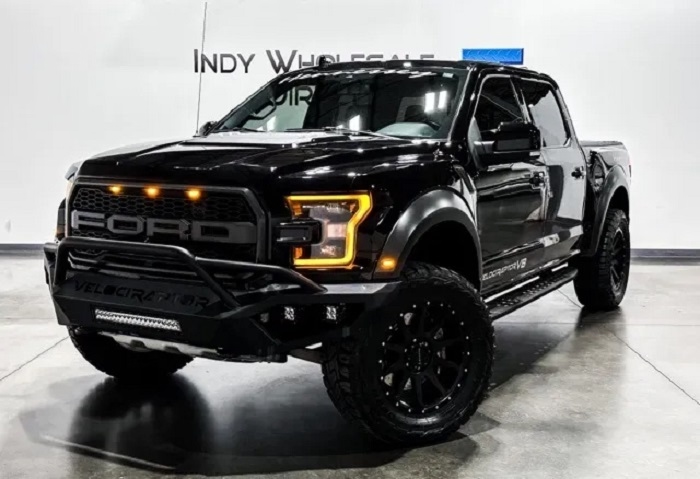Shopping for a used Ford Raptor? You’re not alone. This performance truck has built a cult following for its mix of off-road capability, on-road comfort, and aggressive styling. Whether you’re eyeing a second-gen (2017–2020) or the newer third-gen (2021+), used Raptors offer serious capability and V6 twin-turbo muscle—with high resale value to match.
Why Consider a Used Ford Raptor?
A Quick Overview
What It Is: A high-performance, off-road-focused full-size pickup
Key Years:
- 1st Gen (2010–2014): 6.2L V8
- 2nd Gen (2017–2020): 3.5L High-Output EcoBoost V6
- 3rd Gen (2021+): Updated suspension, digital tech, and still the EcoBoost V6
Trims/Packages: Raptor is its own trim under the F-150 lineup
Drivetrain: 4WD only, with long-travel suspension and terrain modes
Ideal For: Off-roaders, truck enthusiasts, and anyone wanting a wild daily driver
DIY Friendly? Basic maintenance yes, but performance components are more involved
Used Frd Raptor Highlights
Off-Road Capabilities That Are the Real Deal
The Raptor isn’t just for looks—it’s engineered to hit dunes, trails, and rough terrain at high speed. Long-travel Fox shocks, locking rear diff, and off-road drive modes come standard.
Pros: Baja-ready straight from the factory
Cons: Bigger than most trails allow; overkill if you never leave pavement
Twin-Turbo Power and a 10-Speed
The second and third-gen Raptors come with a 3.5L twin-turbo V6 producing 450 hp and 510 lb-ft of torque. It’s fast—like a sports-car fast for a full-size truck.
Pros: Quick acceleration, strong towing, impressive torque
Cons: Turbo lag under hard throttle; thirsty when pushed
Wide, Aggressive Stance
The Raptor has a commanding presence with its flared fenders, unique grille, skid plates, and beefy tires. It looks like nothing else on the road.
Pros: Turn heads everywhere
Cons: Hard to park in tight spaces
Interior Comfort and Tech
Later models include SYNC 3 or SYNC 4, premium audio, leather seats, and available digital gauge clusters and large screens (especially 2021+).
Pros: Comfortable and tech-packed for a performance truck
Cons: Some older trucks lack modern safety features like adaptive cruise
Still Holds Value
Used Raptors aren’t cheap—they retain value better than most trucks due to limited supply and high demand.
Pros: High resale value
Cons: Hard to find “budget” Raptors under $40K
Common Issues With Used Ford Raptors
Cam Phasers (3.5L EcoBoost, 2017–2020)
Ticking noise on cold starts can indicate cam phaser wear or failure.
Fix: Ford issued a TSB and revised parts—check service records
Suspension Wear
The Raptor’s Fox shocks are fantastic—but expensive to replace when worn (often around 60K–80K miles).
Fix: Budget for shock rebuilds or replacements
Turbocharger or Intercooler Condensation
Some owners report intercooler condensation leading to rough starts or hesitation.
Fix: Ford updated the intercooler design on later builds
Fuel Economy
No way around it—Raptors are thirsty. Expect 14–16 mpg in mixed driving.
Fix: None really. Drive style helps, but this truck wasn’t built for MPG
Maintenance and Reliability Outlook
Routine Maintenance Schedule
- Oil Change: Every 5,000–7,500 miles (synthetic recommended)
- Transmission Fluid: Replace at 60,000–100,000 miles
- Brake Fluid: Every 2–3 years
- Spark Plugs: Every 40,000–60,000 miles (turbocharged engine)
- Differential/Transfer Case Fluids: Every 30,000–60,000 miles
Fuel Economy (EPA Estimated)
- 2017–2020 Raptor: 15 city / 18 highway / 16 combined
- 2021+ Raptor: 14 city / 16 highway / 15 combined
Reliability
Used Raptors are generally reliable if maintained. Second-gen models have had a few known issues (cam phasers, intercooler), but most are manageable with documented service.
Pros: Proven platform with high-performance parts
Cons: Cost of repairs and parts is higher than on a standard F-150
FAQs
Is a used Ford Raptor worth it?
Yes—if you want serious off-road capability, strong resale value, and a unique truck. Just be prepared for higher ownership costs.
What’s the best year for a used Raptor?
2019 and 2020 models are solid picks—they’ve had many earlier bugs worked out and offer the refined 10-speed and updated Fox shocks.
How much does a used Ford Raptor cost?
Prices vary based on year and mileage, but most clean second-gen Raptors sell for $38K–$55K. Third-gens start around $65K used.
Is the Raptor good for towing or daily driving?
It can tow up to 8,000 lbs and handles daily use surprisingly well for a performance truck. Just expect a wide footprint and low MPG.
What should I check before buying a used Raptor?
Ask about service history—especially cam phaser repairs, suspension maintenance, and intercooler updates. Check tire wear, underbody damage, and mod history.
A used Ford Raptor is more than just a pickup—it’s an experience. Whether you’re hitting trails or just enjoying the power on pavement, the Raptor delivers a unique combo of speed, strength, and utility. It’s not cheap, and it’s not subtle, but it’s one of the most capable and entertaining trucks you can buy. Just make sure it’s been cared for, and it’ll give back every time you hit the gas.



